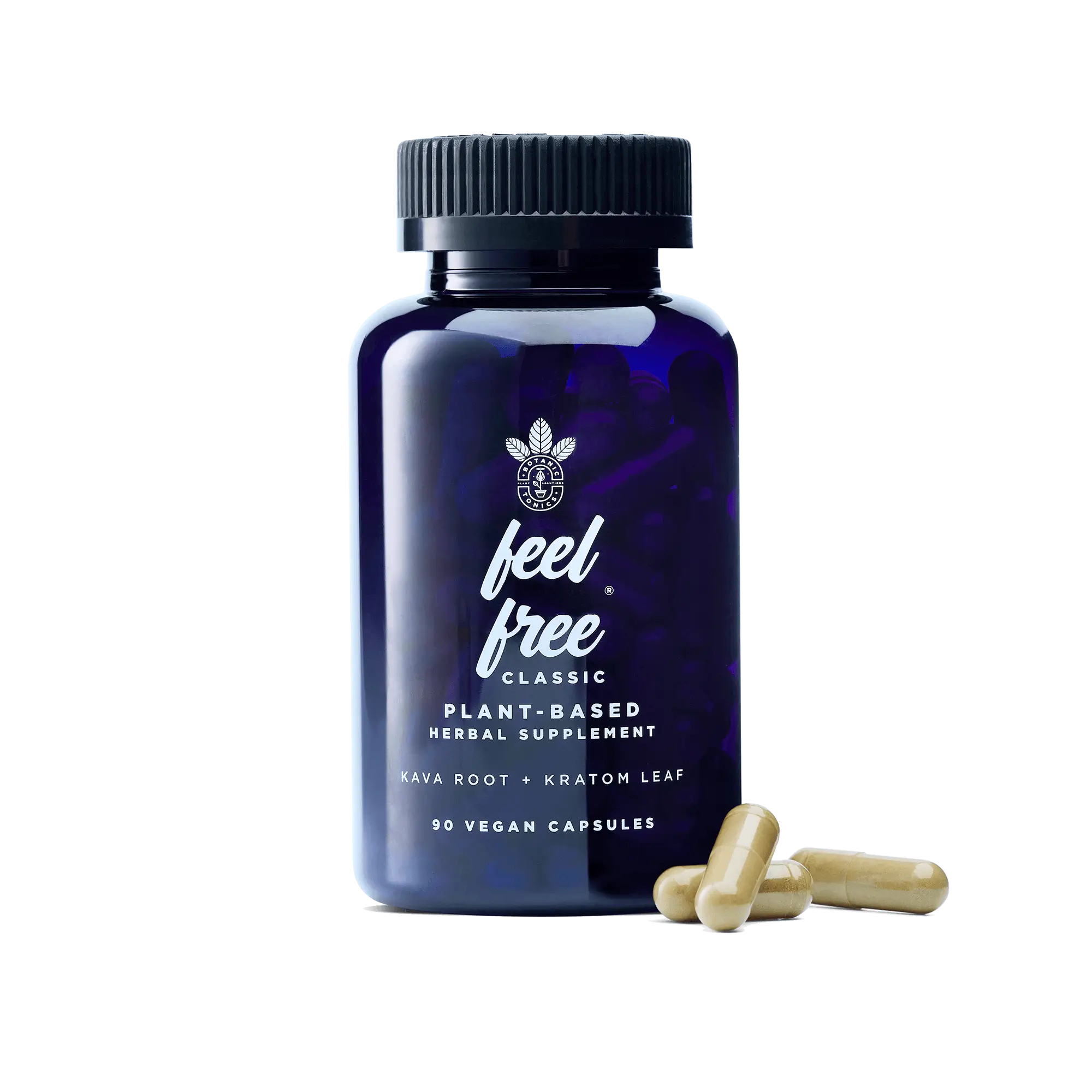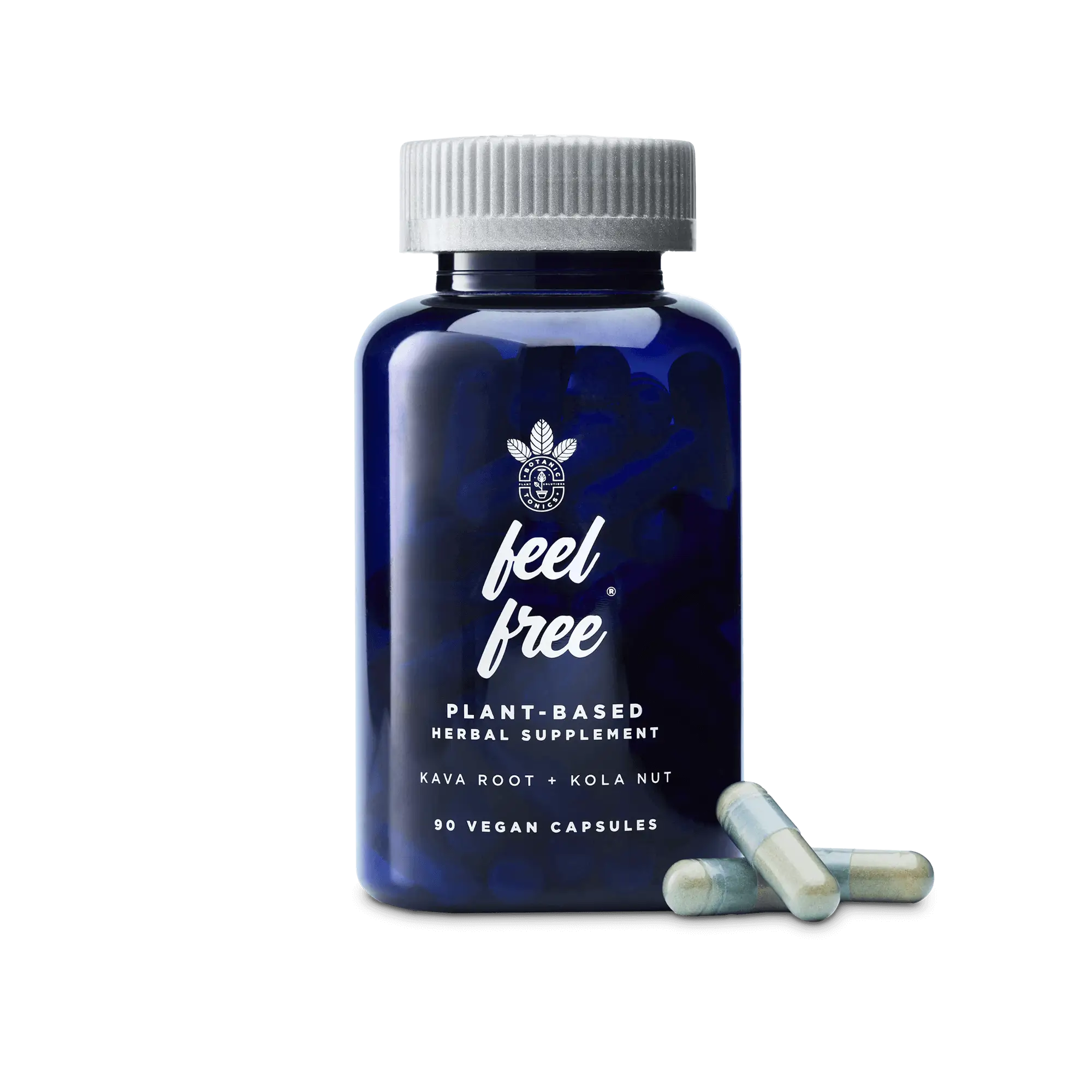Kava is a popular natural supplement taken to enhance focus, promote mental clarity, ease feelings of occasional anxiety, and lift your mood. There are different types of kava, but they all originate from the same source. It’s derived from the roots of the a plant, Piper methysticum, native to the remote islands of the western and south Pacific, and is a member of the peppercorn family.[1]
Since kava stems from the Piper family tree, would a sprinkle of powdered kava over your salad add the same zip as a few dashes from the pepper shaker?
Well, not exactly—despite their shared lineage, kava and peppercorn aren’t all that similar in flavor. So, what does kava taste like if it doesn’t pack the same spicy kick as its cousin?
Ready your palate and read on to learn all about the kava root, kava’s flavor profile, and how to enhance its unique taste.
Kava: Flavor and Sensation in One

Pure kava extract is refined from the plant’s dense roots. Thus, it packs many of the same notes you might expect from other fibrous, grassy greens. Kava powder typically has hints of:[2]
- Herbaceousness
- Acidity
- Earthiness
Overall, however, kava’s flavor can be described in one word: bitter.
The brave kava consumers that gulp down kava extract on its own encounter an overwhelmingly bitter, acrid taste akin to pills and other medicines. That’s hardly a surprise, as kava is generally renowned for its holistic bodily effects rather than its palate-pleasing potential.
Flavor isn’t the only part of the eating experience, either. Kava is known for the sensation it elicits on the tongue, gums, and cheeks. The effect kava produces in the mouth may include:
- Numbness
- Tingling
- Easing of discomfort
This flood of sensation first manifests orally but soon travels through the rest of the body as kava goes to work on the rest of your body. While kava must be taken orally, your tongue doesn’t have to be left recoiling in displeasure following your kava use and intake.
There are various ways to make kava taste better so you can enjoy its many benefits without having to experience its most dissuasive downside.
How Best to Deal With Kava’s Intense Flavor
One of the most popular ways to take kava is by brewing it into kava tea. Unfortunately, on its own, a cup of this kava is a far cry from English Breakfast.
What does kava tea taste like, then?
Well, pretty much like the micronized kava powder itself—bitter and numbing. With a splash from the kettle, kava powder may taste slightly diluted—but hot water alone isn’t going to assuage the intense bitter notes the extract produces.
So, to liven things up in your cup, you may consider tossing in your favorite tea bag. Herbal and fruity varieties work well to balance against the tongue-tickling acridness of kava.
If tea isn’t your thing or you’d prefer to forgo kava’s bitter flavor entirely, your tongue can still rest easy. There are plenty of other tasty ways to incorporate kava into your life.
A great way to try kava is by visiting a kava bar. But, what is a kava bar exactly? A kava bar is similar to a traditional bar but serves kava-based beverages. Before heading out to one, be sure to learn about the kava bar age limit. There is no set kava bar age limit, so the limit varies with each establishment.
Alternatives to Kava Powder and Tea

While a kava tonic is a simple way to consume it, the easiest way to bypass kava’s bitter bite is by taking it in capsule form. Swallowing kava capsules rather than sipping it down presents several advantages:
-
Sidestep the unappealing taste – Modern capsules are virtually flavorless. They also go down easily, so there’s no chance for them to sit in your mouth and melt, thus releasing the bitter contents within.
- Take them quickly – Unlike hot tea which can take a long time to sip to completion, capsules only require one swallow and are down in seconds.
- Benefit from the same desired effects – Whether you ingest it in a tea, powder, or capsule, an equivalent dose of kava will elicit the same results in your body no matter how it gets in your system.
- Avoid the numbing sensation – The feeling kava takers get inside their mouths can be quite off-putting for many who simply desire its other bodily effects. When you swallow a kava capsule, it doesn’t leave your mouth numb and tongue tingling.
If you’re wondering, are kava capsules effective? Kava capsules have very similar effects to kava tonics, making them a simple and effective method of kava consumption.
Kava tonics are another way to mask the bitterness of kava while still benefiting from its effects. Tonics are the perfect kava supplement because they are mixed up to enhance both kava’s flavor and effects. Tonics tend to:
- Kick in 15-20 minutes after consumption
- Taste much better than the extract on its own
- Have other active ingredients that bolster your alertness and ease your mind
Whether you sip it in liquid form or swallow it as a capsule, kava is a flavor best covered up, rather than savored. If you’re ready to have a kava tonic or taking it as a capsule, ensure you’re procuring it from a supplier that produces natural products of the highest quality of traditional kava.
Secure Top-Quality Kava Products from feel free

When taking anything to supplement your body’s natural balance, you want to ensure it is pure, genuine, and as safe as possible. If you want kava to be an active ingredient in your tonic, but want to avoid its bitter taste, Botanic Tonics can help.
feel free brings the power of kava directly to your doorstep. Our feel free CLASSIC tonic contains kava root and leaf kratom, and our feel free capsules are made with natural ingredients like kava root, kola nut, lion’s mane mushroom and rhodiola. All our ingredients are sourced responsibly from around the world. Our products are made in the USA and contain safe serving sizes, so you can consume kava confidently.
Whether you’re trying to ease your nerves or hone your concentration, banish the bitterness and beckon the benefits with Botanic Tonics.
Sources:
National Library of Medicine. Kava. https://www.nccih.nih.gov/
The Mount Sinai Health System. Kava Kava. https://www.mountsinai.org/
















